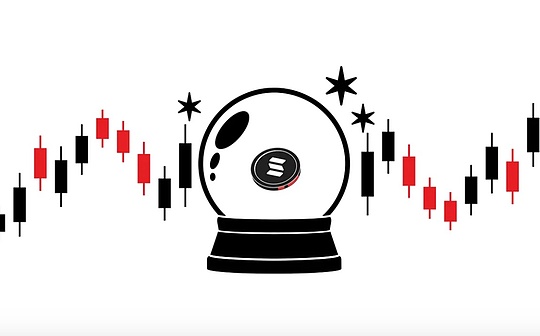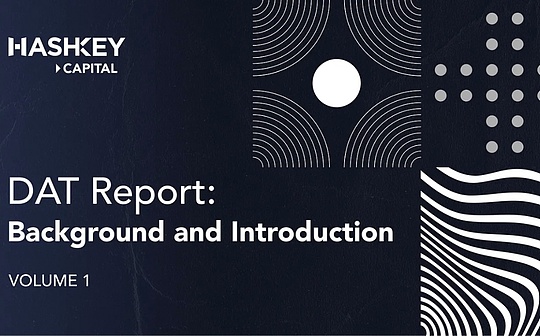
Author: Zhang Feng
Stablecoins are seemingly unbreakable anchors in the crypto world.It emerged from the market turbulence and the ultimate desire for “stability” and grew into a key bridge connecting traditional finance and the digital world.However, a question related to its fate has emerged: How long can this seemingly solid gold mine be mined during the business dividend period of stablecoins?This is not a simple issue of years, but a grand narrative about technology, supervision, monetary sovereignty and future financial forms.

1. The birth background and mission function of stablecoins
The emergence of stablecoins is no accident. It is a hand of survival extended by the native cryptocurrency ecosystem to the traditional world in desperation.
A desire to survive in a volatile market.Bitcoin’s dream is a “peer-to-peer electronic cash system”, but its violent price fluctuations have seriously failed in the two core functions of currency as a value scale and a medium of exchange.The craze of 2017 and the cold winter of 2018 made the market deeply realize that a financial system without inherent stability is like a ship sailing in stormy seas without ballast stones, which may capsize at any time.Whether traders are seeking temporary safe havens or decentralized finance (DeFi) protocols require reliable units of account, the market is clamoring for a tool that has the global and instant nature of cryptocurrency while maintaining price stability.Stablecoins came into being.
The core functions of stablecoins can be boiled down to three points.
The first is trading media and settlement tools.It is the “blood” flowing within cryptocurrency exchanges, greatly reducing the friction and complexity of cryptocurrency transactions.In the field of cross-border payments and remittances, it demonstrates the potential to challenge the traditional SWIFT system and achieve near-real-time, low-cost global value transfer.
The second is value storage and hedging tools.When the market plummets, traders can quickly convert volatile assets into stablecoins to preserve their principal in a “parking” manner and wait for new opportunities.This is a crucial safety valve in a pure crypto ecosystem that lacks traditional safe-haven assets (such as direct access to fiat currencies).
The third is the cornerstone asset of the DeFi world.In the entire DeFi Lega, stablecoins are the core raw material of almost all building blocks.It is the collateral of the lending agreement, the main component of the liquidity pool of the decentralized exchange (DEX), and the interest-earning asset of Yield Farming.
It is these rigid needs that drove stablecoins from scratch to explosive growth, forming today’s huge market of hundreds of billions of dollars, ushering in its first and most glorious dividend period.
2. Analysis of similarities and differences between stablecoins and central bank digital currencies
However, while stablecoins are making rapid progress, another force is quietly rising from the national level—sovereign digital currency (CBDC).The two have similar shapes, and both appear as digital tokens, but their genes are very different, just like the twin flowers blooming in the field and the towering trees carefully cultivated by the country.
The similarities lie in their digital form and pursuit of efficiency.Both are based on blockchain or similar distributed ledger technology (DLT), aiming to improve payment efficiency, reduce transaction costs, and adapt to an increasingly digital economy.They are all trying to solve some pain points in the traditional financial system, such as delays and high fees in cross-border payments.
However, their differences are fundamental and determine their different development paths and fates.
Decentralized trust vs. national sovereign credit.This is the core difference.The credit of legal currency-backed stablecoins represented by USDT/USDC is ultimately derived from the U.S. dollar reserves in custodian banks (although the transparency has been repeatedly questioned), which is an “on-chain mapping” of traditional credit.The credit of CBDC originates directly from the central bank’s balance sheet. It is a digital extension of the country’s sovereign credit. It is legally compensable and its credit rating is unmatched by any private institution.
Market drive and compliance game vs. top-level design and legal enforcement.Stablecoins are issued and operated by private companies, and their rules are jointly shaped by the market and technology communities. They are always exploring and gaming in the gray area of global regulation.CBDC is designed, issued and supervised by the central bank. It has been embedded in the existing legal and regulatory framework since its birth and is mandatory.
The trade-off between anonymity and transparency.Stablecoins (especially those based on public blockchains) provide a degree of pseudo-anonymity. Although transaction records are publicly available, identities can be separated from addresses.CBDC will inevitably face the problem of “controllable anonymity” in design – the central bank needs to strike a balance between protecting public privacy and meeting regulatory needs such as anti-money laundering, counter-terrorism financing, and monetary policy implementation. This may lead to a centralized and more controllable financial monitoring capability.
“Faucets” outside the system vs. policy tools within the system.The issuance of stablecoins is mainly determined by market demand. It is like a “faucet” that is outside of traditional monetary policy. Its large-scale flow may have an impact on the financial stability and monetary policy transmission of small economies.CBDC itself is the direct carrier of monetary policy tools, through which the central bank can implement interest rate policies or make structural adjustments more accurately and efficiently.
3. In-depth analysis of the stablecoin processing model in China and the United States
Faced with the new proposition of stablecoins and CBDC, the two major countries, China and the United States, have demonstrated completely different response models based on their financial systems, regulatory philosophies, and global strategies.
The U.S. model can be summarized as “market first, regulatory integration, and dual tracks.”As a country with strong financial markets and technological innovation capabilities, the United States has shown amazing tolerance for stablecoins.Compliance stablecoins such as USDC have been initially recognized by regulatory agencies, and Congress is also actively promoting legislation aimed at incorporating the issuance of stablecoins into the federal regulatory framework to “correct their name.”
At the same time, the United States has passed an anti-CBDC bill, and the short-term trend has become clear.Although the research and development of the Digital Dollar is advancing, the attitude is cautious and more focused on studying its long-term impact on the financial system, privacy and international currency status.The U.S. strategy is likely to allow private stablecoins to coexist and compete with the digital dollar that may appear in the future, forming a more dynamic digital currency ecosystem anchored by U.S. dollar assets, thereby further consolidating the global hegemony of the U.S. dollar.
China’s model is “sovereignty-led, gradual development, and ecological closed loop.China has taken a clear and resolute path: it firmly prohibits any private institution from issuing stablecoins in the mainland, viewing it as a potential threat to financial security and monetary sovereignty.At the same time, China is fully promoting the research and development and pilot projects of digital renminbi (e-CNY), making it the global leader in CBDC.The strategic positioning of e-CNY is very clear: it mainly serves domestic retail payment scenarios, improves payment efficiency, strengthens the effectiveness of monetary policy, and provides a new technical pivot for the internationalization of the RMB.China is building a digital financial ecosystem with the digital renminbi as the core, various financial institutions as nodes, and completely under sovereign control.China remains highly vigilant about overseas stablecoins and strictly limits their circulation and use in the domestic market.In September 2025, the Central Bank of China launched the Digital RMB International Operation Center, which includes a digital RMB cross-border payment platform, a blockchain service platform and a digital asset platform. It can be said that it covers almost all the functions of stable coins.
These two models reflect the fierce collision between the two philosophies of “market-driven innovation” and “state-led security” in the digital currency era, and also indicate the possible differentiation of the global digital currency landscape in the future.
4. The role of stablecoins and central bank digital currencies in the future blockchain economy
Even in the face of competition from central bank digital currencies, stablecoins will still play a key role in the blockchain economic system for a long time to come, but their functions will evolve and deepen.
In a typical Token economy ecosystem, the payment circulation function is like the blood system and is crucial.Service tokens and equity tokens respectively undertake the functions of resource access and governance decentralization within the ecosystem, while payment tokens focus on value scale and exchange medium.In this area,Stablecoins and central bank digital currencies (CBDC) constitute two technical paths with respective advantages.
The core advantage of stablecoins, especially mainstream compliance varieties, is that they inherit the openness and global nature of the blockchain.It runs on a permissionless public chain and can be seamlessly embedded in various decentralized finance (DeFi) applications and global trade scenarios. It provides excellent value anchoring and trading pairs for service and equity tokens, greatly improving the efficiency of capital flow.However, its credit relies on the reserve management of commercial institutions, which involves potential credit risks and regulatory uncertainties.
Central bank digital currency represents the digital extension of national credit.Its biggest advantage lies in legal compensation and absolute legal protection, providing the highest stability and payment finality.In domestic payments with a clear legal framework and integration with the traditional financial system, CBDC has unparalleled credibility.But their designs tend to be more centralized and may have limitations in cross-border flows and compatibility with certain decentralized protocols.
In short, the two are not simply substitutes, but constitute a complementary pattern.Stablecoins are good at driving an open and innovative global crypto-economic network, while central bank digital currencies are committed to consolidating state-led digital financial infrastructure.In the future complex multi-chain and multi-economy world, they are likely to coexist and develop collaboratively for a long time based on different application scenarios and regulatory requirements, and jointly support a prosperous and diversified Token economic ecology.
5. Maybe stablecoins are not irreplaceable
Back to the original question: How long will the business dividend period of stablecoins last?Perhaps we are standing at a historical turning point, depending on the evolution speed of three key variables.
The speed and severity of global regulation.Once major economies (especially the United States) establish a strict regulatory framework, the “barbaric growth” dividend of stablecoins will come to an end and enter a mature competition stage of compliance and profit dilution.
The maturity and promotion level of CBDC in major economies.If mainstream CBDCs such as digital dollars and digital euros are officially launched and opened to non-residents in the future, they will rely on their unparalleled credit advantages to form a direct, dimensionally reducing replacement for stablecoins in a large number of scenarios such as cross-border payments.
The evolution of blockchain technology itself and cross-chain interoperability.If a better decentralized value scale solution emerges in the future that does not rely on price-stable assets as collateral, the cornerstone status of stablecoins will also be shaken.
StablecoinIt is a historical product between the failure of the old system and the failure of the new system to be established.It successfully fulfilled its initial mission as a “bridge” and “catalyst”, enlightening the market’s demand for digital stable value.With the entry of sovereign digital power and the iteration of technology, the halo of stablecoins as a “necessity” may gradually fade, and may eventually evolve into an important option in the future diversified digital asset landscape, rather than the only core.
Its bonus period is the window period given by the times.This window will not suddenly close, but will slowly narrow as the sovereign digital torrent approaches.Maybe we need to lift our heads from the short-sightedness of chasing dividends and think about how to build deeper value, better compliance, and a more sustainable ecological model. As the saying goes, the world is so big, “only change is hard.”






